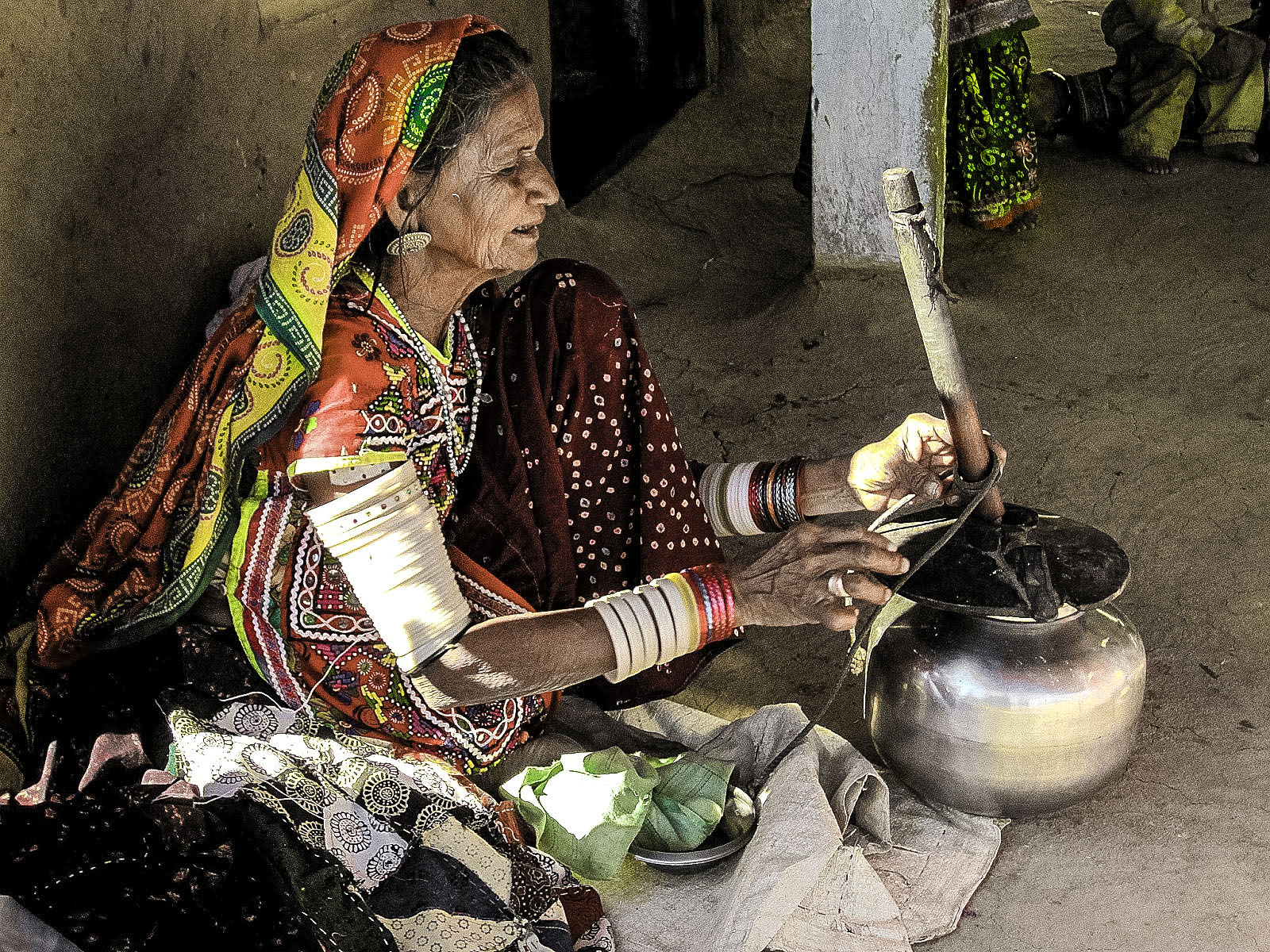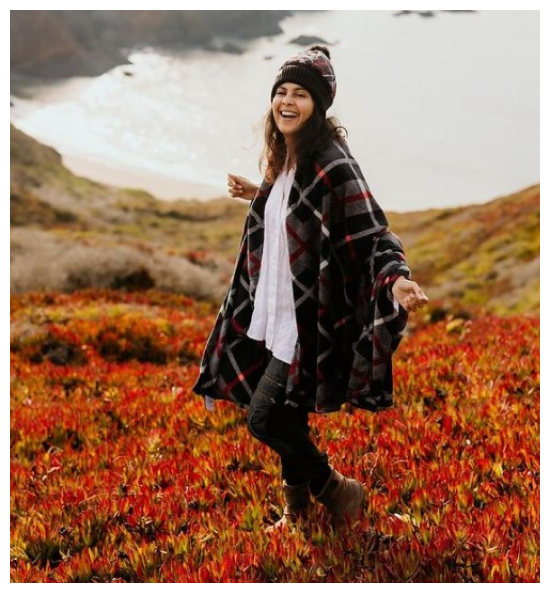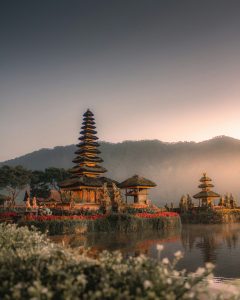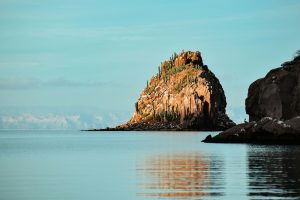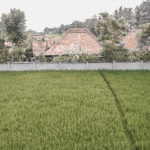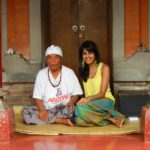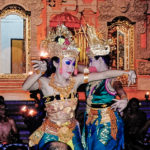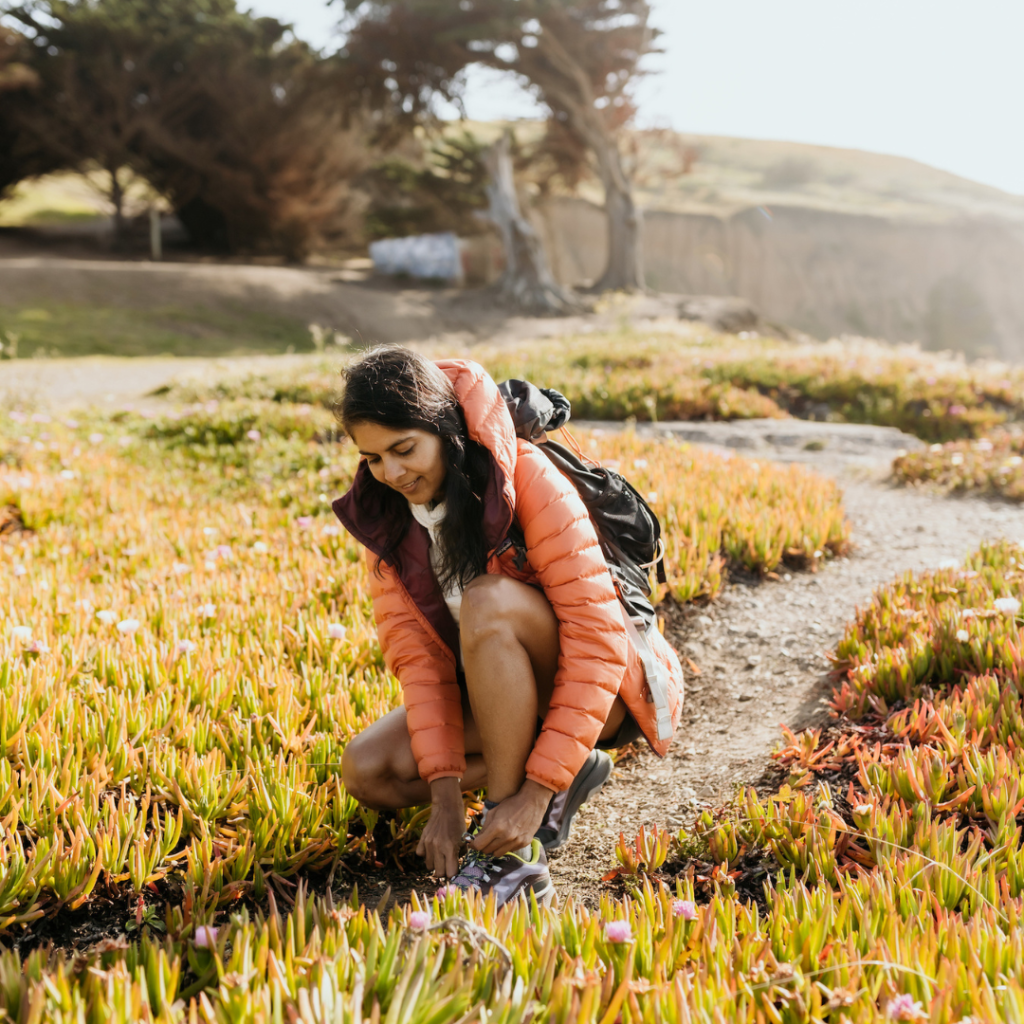Our overnight train from Ahmedabad brought us to the small town of Bhuj early in the morning as the sun was starting to rise. Now we needed to get to Hodka. A remote village, it was our gateway into the salt desert. We tried a regular auto from the Bhuj auto stand. He refused and mumbled something we didn’t understand. We tried a larger auto. He refused and pointed down the road at a bunch of serious looking jeeps that were clustered together as if in a conference. We walked down toward the jeeps and were refused once again but directed toward a bunch of tired looking cars. As we started toward the cars we were instantly surrounded by 5-6 of the drivers all trying to haggle for our fare to Hodka.
We finally managed to survive the haggling and got ourselves a car & driver at a price that seemed reasonable and we gratefully sank into the dusty seats of the old car, happy to be out of the sweltering December heat.
The road trip was good fun as my cousin, her friend and I swapped stories about our lives and realized how similar some of our issues were even though we were each living in different continents and cities. We passed by many small towns and decided to stop at one town to grab a quick chai (tea). We got down and saw a bunch of roadside stalls. We randomly picked one and savored the piping hot tea with great relish – me of course as usual wondering if I was going to fall sick to the ground any minute, drinking tea at a roadside stall in India. As I was having visions of fainting and convulsing in fits, I saw one of the dudes scooping up a brownish substance from a large vessel. Mawa. That’s what the Gujaratis call this sticky thick substance. It was tasty and reminded me a bit of a similar sweet dish we have in the south of India called pal khoa (milk sweet). We grabbed some to go and headed off towards our destination. Pretty soon I thought I was seeing water on the road ahead of me, except it turned out to be a mirage. I found that pretty thrilling and exotic for some reason. The heat in India is no joke. Even in December.
| Mawa |
After an hour and a half we arrived at the mysterious sounding Hodka. “What’s that?” asked many of my Gujarati friends in the U.S. when I told them I might be visiting this village. Off the beaten path, Hodka is a little village north of Bhuj where the local people have built a resort using only local building materials and natural products and in the same style as their own houses. Re-built every year, the mud tents amongst the locals were to be our home for a night at the Shaam-E-Sarhad Village resort.
| Our tent |
| Mud tents |
| Home cooked traditional Gujarati thali |
Our mud tents were really cute! I fell in love immediately and swooned in delight at the bathroom! I made sure to ask about lizards and were told they simply don’t venture inside the tents – I mean it was the desert folks!!! Lizards are everywhere in India. And they are just simply unwelcome in my space! We set our backpacks in our tent and were treated to a traditional home cooked Gujarati meal by the locals which was simple, yet delicious. Stuffed, we took the same car we arrived in and headed off to see the salt desert – officially referred to as the Rann of Kutch.
The Rann of Kutch is a salt marsh located in the Thar desert. It’s only a seasonal marsh though, which is what is partly amazing about this region. It covers a huge area of around 10,000 square miles and is positioned between the Gulf of Kutch and the mouth of the Indus River in southern Pakistan. Approaching the Rann of Kutch is special as you can see the desertscape change from a brownish hue to a whitish hue – signalling the start of the salt marsh. We parked our car where it could go no further and set out by foot into the desert. We saw a few camels loitering around, mostly posing for photographs and waiting to carry people further into the desert. We chose to explore by foot and spent a good few hours enthralled by this vast marsh. Sunset at the marsh is a mystical experience further enhanced by the Rann of Utsav – the popular desert festival showcasing traditional arts and crafts from the Kutch region. Food stalls are plenty while entertainment in various forms are available throughout the evening.
By nightfall we were at our tents to enjoy another delicious home cooked meal and a night filled with music from the local villagers under the stars. The fire pit roaring, we made friends with a South African couple who educated us on the new Rickshaw Challenge that was all the rage in India where you formed a team from your country and you operate your own custom auto rickshaw with your team of 4, cross country. As the sky got darker, the fire started to wind down, and our yawns led us back to our tents. Walking toward our tent we realized how cold it really was, although I did not have to use my hat or my gloves. Sleeping in the tent was fun as the three of us got cozy in the king sized bed and chatted for a couple of hours before giving into dreams of camels, salt and fabric.
Morning was cold but soon turned blazingly hot – after all we were still in the desert! Remember Valji, the weaver we met in Bhuj in my previous blog? Well his cousin, Ramji lives in Hodka and he invited us to his home to take a look at his hand woven fabric – courtesy of a phone call from Valji. We were super thrilled to be heading out on this adventure and waited anxiously at the entrance for Ramji. He soon pulled up in his beaten up old truck and we realized we kind of had to sit in the back space where his goats and stuff probably sat typically. We sportingly piled into the back and rode off into the desert heat. His home was really close by and we were there in a matter of minutes. Ramji and his family live in a compound of mud huts. Cool and clean, the huts were a welcome reprieve from the scorching heat. After greeting his wife, kids, aunts, uncles, grandpa, and grandma, we entered one of the huts and were given a few plastic chairs and offered tea. If you haven’t guessed already, offering tea is an integral part of the Indian culture.
Ramji quickly pulled out beautiful hand woven bedsheets and covers, in different prints and patterns. Each one seemed more exquisite than the other and we oohed and aahed at all. We learnt that Ramji holds exhibitions in New Mexico frequently and even New York City. I was stunned. He says he sells each bedsheet for thrice the price that he was quoting me. In dollars. I believe him as I know what bedspreads and comforters cost in the States. I can’t believe he lives in this simple mud hut.
We decide we want a few bedsheets for our family members and now comes then the time. To bargain 🙂 Bargaining has to be done in the local language of course and I had absolutely no knowledge of Gujarati, although that did not mean I didn’t attempt to speak in a neighboring dialect, Hindi, which also happens to be India’s national language. I rattled off what little Hindi I knew, accompanied by my cousin and her friend who spoke a combination of Hindi and Gujarati – somewhat haltingly. We managed to land on a decent price that suited us all and were pretty soon proud owners of bedsheets and comforters. Taking one last look at the lovely home in front of us, we said bye to his family and piled in his truck and were soon at our tents for another lovely afternoon meal! Here are some glimpses of Ramji’s family and his home.
| Inside the small village |
After our lunch, we packed up and headed out back towards Bhuj and this time we stopped at a small village called Khavda. Khavda is along the main highway to Bhuj, roughly about 66 kms north. Khavda kind of has a nice ring to it, if you ask me. The small town is also known for its potters. Apparently Khavda is also the gateway to flamingo colony, reachable only by camel from October to March. My cousin assured me we had no time to make a flamingo stop on this trip and so we continued on our quest to find Ibrahim, a renowned, national award winning potter. We knew that opposite the main bus stand was his home. Those were the only directions given to us. So we asked our driver to drive into the lane behind the bus stand where we had to ask a few more villagers about Ibrahim’s house. We made a left, made a right, almost ran into a goat and a man riding a horse (uh…don’t ask) before we lurched to a stop in front of a small hut. Hmm. Surely this isn’t where the national award winning potter lives?
There squatted Ibrahim’s son Abdul on his ceramic wheel. We wandered over to him as his daughter and wife welcomed us with smiles and hand gestures and giggles. Abdul took us to his store room in the back and showed us all the finished pottery he had on hand. Ibrahim was not in town, he was apparently attending an exhibition. I asked Abdul who his customers were. He said the majority were people from Europe and America. I was surprised. How did people know about this potter, who lived in a mud hut in some remote town wayyy outside of the main city of Ahmedabad?! Did tourists even venture out here?? During my time here, I did a few tourists, but not a whole lot. It still remains off the beaten path. Phew.
By now we are almost out of cash. But I must buy some of this exquisite pottery for mom. We try to scrounge up what we have left between us to buy some beautiful pots we saw in one corner of the room. Our driver, watching us, offers to loan us some money until we get into Bhuj. Abdul says not to worry that we can send him money once we reach our home. I’m in awe that he would trust us to take his pots, return home (to a different city that too) and send him his payment later and even more touched that our driver was willing to lend us money! I can’t imagine a cab driver in San Francisco offering to lend me money to buy a pot because I ran out of cash. 🙂

In the meanwhile, his wife offers to make us tea. Flies swarm all over the pot she’s using to make the tea. This time I decide to skip the tea. A flash of color catches my eye on the roof. Toys. Abdul packs up the pots carefully and we profusely thank him, use the driver’s money to pay him, and pile back into our car amidst more giggling and gawking by the kids. They wave to us.
We’re soon on our way to Bhuj to catch our overnight train to Ahmedabad. As I lie on the very top berth, scouting for roaches or rats, I reminisce about the Kutch region and its people – quiet, colorful, humble and friendly – Gujarat surprises. Before I know it, I’m jarringly woken by shouts of “Ahmedabad. Ahmedabad. Ahmedabad.” I guess we’ve arrived.
